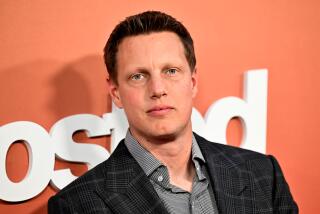Oracle Software Sees Future in Parallel Universe
- Share via
Software’s other billionaire CEO has seen computing’s multimedia future and swears it won’t belong to Microsoft. Really. So what does Oracle’s Larry Ellison think he knows that Microsoft’s Bill Gates doesn’t?
The answer, Ellison says, has to do with vision. Bill and today’s “digirati” have picked the wrong one: “People see the present, and they think it’s also the future. It’s not.”
Sorry, Bill, but Ellison insists a company like Microsoft is simply too PC to define the future--not politically correct, just “PC-centric.”
Microsoft sees tomorrow as a seamless network of personal computers and microprocessors, all faultlessly exchanging data. By contrast, Oracle grew up as a database company and believes the real value of design lies in the data, not the machines that manipulate it.
So where Microsoft, AT&T; and IBM anticipate their customers using ever more sophisticated computer networks, Ellison instead sees software--Oracle’s software--creating a giant, single, throbbing metacomputer.
Think of it as an uber- operating system that can take the data in each and every micro-, mini- and mainframe computer and mold it into a single, unified database that can be instantly accessed and processed by any machine at any time.
Blending thousands of little computers into giant metacomputers in this way is called massively parallel processing, and it’s a technique that can violently shift the price/performance curves of today’s computational technologies.
“Massively parallel computing is inevitably the successor to mainframes,” Ellison asserts. “By the end of 1996, at the same cost of putting the data on PCs, we’ll have subsecond access time to over 10 terabytes of data.”
That is more than 10 trillion pieces of information.
The underlying design philosophy of parallel processing is easy to explain but hard to implement: if 10 computers can be 10 times faster than one computer, then it only follows that 1,000 computers should be 1,000 times faster; and 10,000 computers will be 10,000 times faster.
What about diminishing returns? Ellison doesn’t think so. He’s bet his future that the new mathematics of massive parallelism will hold true. He’s even invested a small fortune in a parallel-processing computer company called N-Cube and is ruthlessly proprietary about Oracle’s parallel universe.
Says Ellison: “If I see Danny Hillis”--the brilliant co-founder of a rival parallel-processing company called Thinking Machines in Cambridge, Mass.--”quoted as an expert on massively parallel processing one more time, I’m going to puke.”
Ellison contends that Oracle, based in Redwood Shores, Calif., is the only company that has created the algorithms and intellectual infrastructure to turn a handful of local area networks into an integrated deep-discount database supercomputer.
“You can go 10 times faster at a tenth of the cost,” Ellison insists.
Only Oracle, Ellison says, has figured how to offer “graceful scaleability” that lets a customer move from that handful of parallel processors to hundreds of them. Let Microsoft write operating systems for computers; Oracle will grow richer selling the operating systems for corporate metacomputers.
So why isn’t Bill Gates quaking in his boots? “He questions our ability,” Ellison says. “His attitude is ‘Show me.’ No one’s believed us until very recently.”
That’s understandable. Over the past few years, Oracle was a software company with a reputation for promising clients the moon but delivering only green cheese. Ellison, who owns a third of the company, had a reputation as a brilliant software buccaneer who believed in rapid growth by hyping sales and deliberately ignoring customer service.
In fact, Oracle, which has grown to over $1.5 billion in annual revenue, nearly cratered as the company’s credibility gap assumed the proportions of the San Andreas fault.
Only a hailstorm of mea culpas, a massive personality transplant and a new management team enabled Ellison’s company to recapture legitimacy.
Now, the aggressively feral Larry Ellison, who dropped out of the University of Illinois (and has a chip on his shoulder that’s not made of silicon), says he has learned from his best friend Steve Jobs how to talk like a visionary without sounding like a zealot.
Today Oracle is one of the five most highly valued companies in the computer industry, and like Microsoft, Ellison is eyeing Hollywood, cable TV and network media as the company’s next frontier.
Ellison believes that Oracle software becomes the ideal medium to cheaply package and distribute multimedia over cable systems, telephone wires and interactive computer networks. “It turns out that when you have our kind of parallel database architecture, it becomes easy to create a multimedia ‘server’ that can distribute a dedicated video stream on demand,” he says. “We built this video server in 60 days.”
U.S. West, the same regional Bell operating company that spent $2 billion to buy a stake in Time Warner, has announced plans to test Oracle’s multimedia server. So when will Tele-Communications Inc., Time Warner, Barry Diller et al. turn to Oracle to handle the technologies of multimedia?
“You can shoot me if we’re not a beta site at a cable company within a year,” Ellison says. “But you can’t use that information to buy stock. You can shoot me but you can’t sue me.”






